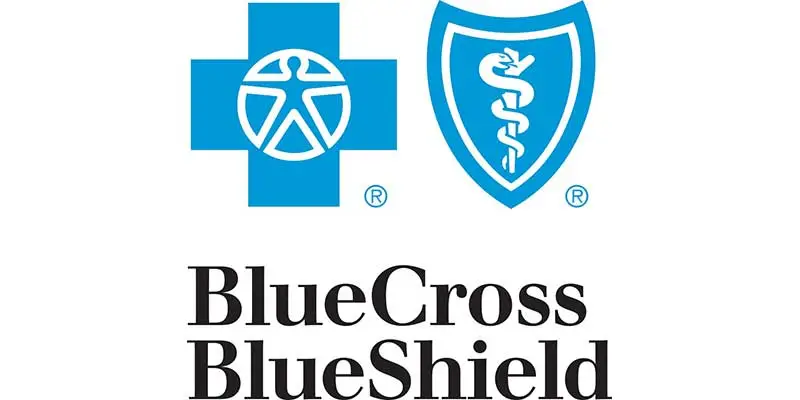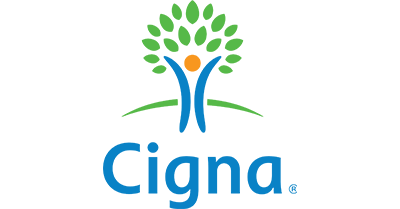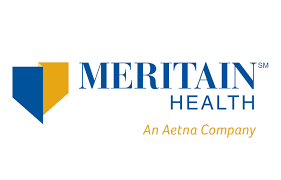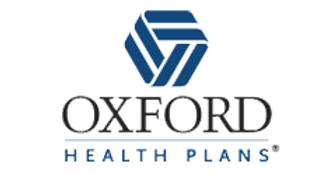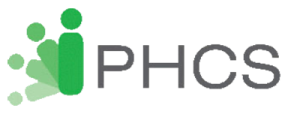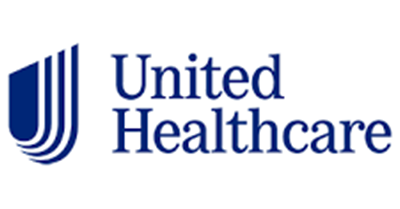(212) 245-5688
Sign In with google +
News articles that have been posted to our Google + page.
May 24, 2017
Risk of heart attack with NSAIDs after only one week of use.
Abstract
Objective To characterise the determinants, time course, and risks of acute myocardial infarction associated with use of oral non-steroidal anti-inflammatory drugs (NSAIDs).
Design Systematic review followed by a one stage bayesian individual patient data meta-analysis.
Data sources Studies from Canadian and European healthcare databases.
Review methods Eligible studies were sourced from computerised drug prescription or medical databases, conducted in the general or an elderly population, documented acute myocardial infarction as specific outcome, studied selective cyclo-oxygenase-2 inhibitors (including rofecoxib) and traditional NSAIDs, compared risk of acute myocardial infarction in NSAID users with non-users, allowed for time dependent analyses, and minimised effects of confounding and misclassification bias.
Exposure and outcomes Drug exposure was modelled as an indicator variable incorporating the specific NSAID, its recency, duration of use, and dose. The outcome measures were the summary adjusted odds ratios of first acute myocardial infarction after study entry for each category of NSAID use at index date (date of acute myocardial infarction for cases, matched date for controls) versus non-use in the preceding year and the posterior probability of acute myocardial infarction.
Results A cohort of 446 763 individuals including 61 460 with acute myocardial infarction was acquired. Taking any dose of NSAIDs for one week, one month, or more than a month was associated with an increased risk of myocardial infarction. With use for one to seven days the probability of increased myocardial infarction risk (posterior probability of odds ratio >1.0) was 92% for celecoxib, 97% for ibuprofen, and 99% for diclofenac, naproxen, and rofecoxib. The corresponding odds ratios (95% credible intervals) were 1.24 (0.91 to 1.82) for celecoxib, 1.48 (1.00 to 2.26) for ibuprofen, 1.50 (1.06 to 2.04) for diclofenac, 1.53 (1.07 to 2.33) for naproxen, and 1.58 (1.07 to 2.17) for rofecoxib. Greater risk of myocardial infarction was documented for higher dose of NSAIDs. With use for longer than one month, risks did not appear to exceed those associated with shorter durations.
Conclusions All NSAIDs, including naproxen, were found to be associated with an increased risk of acute myocardial infarction. Risk of myocardial infarction with celecoxib was comparable to that of traditional NSAIDS and was lower than for rofecoxib. Risk was greatest during the first month of NSAID use and with higher doses.
BMJ 2017; 357 doi: https://doi.org/10.1136/bmj.j1909 (Published 09 May 2017)
Michèle Bally, epidemiologist1 2, Nandini Dendukuri, director and associate professor3 4, Benjamin Rich, biostatistician4, Lyne Nadeau, programmer analyst4, Arja Helin-Salmivaara, senior medical officer in charge of training5, Edeltraut Garbe, professor6, James M Brophy, professor2 4 7
Beauty Benefits of Acupuncture
Acupuncture has been popular since ancient times for a reason: It makes people feel better. What’s more, in recent years, patients undergoing the procedure to treat health concerns have often noticed that their looks have benefited, too—leading to a rise in “acupuncture facials” that combine whole-body rebalancing with targeted needle stimulation (and, sometimes, spa-like add-ons) for glowing skin. Less well known, however, is the fact that the technique can also be used to address specific, pesky cosmetic issues—and as it turns out, those are one of the first things a practitioner might look at when diagnosing you.
“In traditional Chinese medicine, we look at the face as a reflection of what’s going on inside,” explains New York City acupuncturist Shellie Goldstein, M.S., L.Ac. “We look at your internal well-being to decipher what’s going on. From the inside, we will make that change, and it will be reflected on the outside.” In other words, the lasting solution to your breakouts or sagging skin might not be a cream or device, but rather a healthier, more balanced body.
Here, Goldstein explains five specific ways that acupuncture can provide a beauty boost from the inside out.
De-Puff
A swollen face is likely a sign of larger issues, according to Goldstein—issues that acupuncture is designed to address. “If you have digestive problems, allergies, or poor lymphatic drainage, what you may see in the face is puffiness,” Goldstein explains. “Not only will we correct it, we will adjust it from the inside.” This is accomplished by inserting fine sterile needles at certain points on the body identified in traditional Chinese medicine. Each resulting “micro-trauma,” as Goldstein calls it, causes a healing response both locally and throughout the body; different points correspond to different bodily systems.
Clear Up Acne
Acupuncture’s rebalancing effect has a way of calming breakouts, whether chronic or caused by monthly hormonal fluctuations. “We look at acne as a reflection of internal heat, and the digestive system,” Goldstein explains. “We can adjust premenstrual breakouts through acupuncture as well by treating the heat that arises” in the body during certain times of the month.
Calm Rosacea
“Similar to acne, it’s about adjusting that internal balance within,” Goldstein says. “Rosacea in Chinese medicine is often about digestion—by clearing up the internal digestive issues, it really helps to minimize redness and irritation in the skin tissue.”
Brighten Dull Skin
Acupuncture can boost a lackluster complexion both directly—by triggering local healing processes in the face—and indirectly, by recalibrating bodily systems. “Simply by putting a needle in the skin, you’re stimulating skin circulation, lymphatic drainage, and collagen production,” Goldstein says. But also, “dullness can often be a lack of energy flowing through the body properly. We work to raise your energy and balance what’s going on.”
Tighten and Tone
Whether your concern is the gravitational pull on your legs or slack facial skin, according to Goldstein, a few needle pricks can help to firm things up. Acupuncture is “absolutely amazing for muscle tone and deeper tissue tone in the body,” she says. “It will help to relax the deeper tissue muscles that are too tight, and tighten the ones that are [loose]. It’s really good for lifting and sculpting the cheeks and jawline, and even for lifting eyebrows.”
OCTOBER 10, 2016 7:20 PM
by EVIANA HARTMAN
Original article published in Vogue
APRIL 25, 2015 8:00 AM
by MACKENZIE WAGONER
Study shows acupuncture doubles the chances of getting pregnant through IVF (In-Vitro Fertilization)
The popularity of acupuncture is increasing. A significant proportion of couples having fertility treatment, especially IVF (In-Vitro Fertilisation) ask their clinician about using acupuncture and some patients undergo acupuncture privately without reporting to their clinicians.
The effectiveness of acupuncture on IVF has been extensively researched; however the results are varied and not conclusive. This is due to previous studies varying significantly in their study design, acupuncture timing and the final outcome measure. As a result of the difference in the studies it is not clear whether acupuncture is beneficial regarding IVF success rates and whether it should be offered to women undergoing IVF.
Read more at:
https://clinicaltrials.gov/ct2/show/NCT02683967
The Efficacy of Interdisciplinary Rehabilitation for Improving Function in People with Chronic Pain
Objective. To examine the efficacy of interdisciplinary rehabilitation for improving function in people with chronic pain. Design. Retrospective Chart Review. Setting. The Pain Rehabilitation Center (PRC) at a medical center. Participants. Individuals admitted to the PRC. Interventions. The PRC operates a 3-week outpatient program that utilizes an interdisciplinary approach to treat people with chronic pain. The main treatment elements include physical therapy, occupational therapy, cognitive behavioral therapy (CBT), and medication management. Physical therapy groups focus on moderate exercise despite symptoms. Occupational therapists teach moderation, time management, and activity modification. CBT groups, led by a pain psychologist, address the psychosocial comorbidities of chronic pain. Medical staff oversee the tapering of opiate analgesics and other symptom targeted treatments. This integrated approach is indicated when conventional treatments have been ineffective. Outcome Measures. The objective outcome was the 6-minute walk test (6 mWT) distance. The subjective outcomes were performance (COPM-PER) and satisfaction (COPM-SAT) as measured by the Canadian Occupational Performance Measure (COPM). Results. Average 6 mWT distances improved by 39% from 375 m to 523 m. Average COPM-PER scores increased from 3.4 to 7.5. Average COPM-SAT scores increased from 2.4 to 7.5. Conclusions. Comprehensive interdisciplinary outpatient rehabilitation can significantly improve function in people with chronic pain.
Svetlana Kurklinsky, Rachel B. Perez, Elke R. Lacayo, and Christopher D. Sletten
Department of Pain Medicine, Mayo Clinic Florida, Jacksonville, FL 32224, USA
Received 15 December 2015; Revised 25 March 2016; Accepted 13 April 2016
Read more at:
http://www.hindawi.com/journals/prt/2016/7217684/
Acupuncture for Essential Hypertension: A Meta-Analysis of Randomized Sham-Controlled Clinical Trials
Patients with high blood pressure may want to look to acupuncture for answers. A recent meta-analysis concluded that acupuncture lowers blood pressure in patients already taking medications for high blood pressure, or hypertension.
The meta-analysis, performed by Li et al. (2014), and published in Evidence-Based Complementary and Alternative Medicine, compares the effects of acupuncture and sham acupuncture for essential hypertension. Sham acupuncture means that instead of inserting needles at established acupuncture points, practitioners inserted needles at non-acupuncture points or used techniques where the needles did not puncture a patient’s skin. Authors analyzed four randomized controlled trials. These trials included a total of 386 patients with essential hypertension.
Results suggested that acupuncture, used 2-3 times a week for 6-10 weeks, was an effective means of lowering both systolic and diastolic blood pressure in patients already taking antihypertensive medications. Patients experienced an average drop of -8.58 mmHg in systolic blood pressure, and -4.54 mmHg in diastolic blood pressure. Acupuncture did not significantly lower blood pressure in patients who were not taking such medications.
Authors recommend that future acupuncture trials for essential hypertension increase the duration and frequency of treatment. They also write, “Larger [trials] with longer follow-up periods would help clarify the potential efficacy and safety of acupuncture for treating hypertension.”
Li D, Zhou Y, Yang Y, Ma Y, Li X, Yu J, Zhao Y, Zhai H, Lao L.
Evidence-Based Complimentary and Alternative Medicine 2014 March
Read more at:
http://www.hindawi.com/journals/ecam/2014/279478/
Pain management with acupuncture in osteoarthritis: a systematic review and meta-analysis.
Acupuncture diminishes pain and improves functional mobility and quality-of-life in patients with osteoarthritis, according to a recent review.
The review, by Manyanga et al. (2014), analyzed 12 trials that compared acupuncture to sham, no treatment, or usual care in treating osteoarthritis, with a total of 1763 participants. The study was published in the August 2014 issue of BMC Complementary and Alternative Medicine.
Results showed that acupuncture patients had significant reductions in pain in comparison to patients allocated to control groups. Acupuncture patients also gained significantly more functional mobility and reported better quality-of-life. Lengthier treatment periods were consistent with greater reductions in pain.
The authors write, “Current evidence supports the use of acupuncture as an alternative for traditional analgesics in patients with osteoarthritis.”
Manyanga T, Froese M, Zarychanski R, Abou-Setta A, Friesen C, Tennenhouse M, Shay BL.
BMC Complement Altern Med. 2014 Aug 23; 14(1): 312.
Read more at:
ARTHRITIS & ACUPUNCTURE
By Dr Kelly Brown (from Living Well Magazine)
Acupuncture and Pain
The weather is getting cooler, and winter is on its way. As the cold settles in, less outdoor activities are performed. Therefore, joint stiffness can become more noticeable. Some arthritis sufferers are able to relocate during cold months, but many people have to suffer through the winter months in pain. Medications can be expensive and have side-effects that can make winter more difficult to get through.
Arthritis and Acupuncture
Acupuncture is effective at treating all kinds of pain. Joint pain that is worse in cold, damp weather can be reduced with acupuncture. Discomfort from degenerative joints can also be treated effectively. Those with rheumatoid arthritis (RA) often find relief in swollen, stiff joints with Chinese medicine. In addition to treating pain from various types of arthritis, side-effects of medications can be relieved with acupuncture.
Acupuncture Pain Theory
In Chinese medicine, practitioners focus on the proper movement of the energy of the body, Qi, in the channels. Any pain is considered a stagnation or improper movement of Qi. Pain associated with stagnation is generally diffuse and can move around. If the stagnation continues, blood will also not move properly. With blood stagnation, sharp, pin-point pain is experienced. Often, arthritis pain is a combination of the two, Qi and blood insufficiently moving in one or more channels. Acupuncture is effective at promoting Qi and blood circulation to decrease pain and improve well-being.
Knee Pain and Acupuncture
Knee arthritis and pain is a common complaint. Acupuncture will help to decrease discomfort in the knee by promoting proper Qi and blood flow in the joint. There are six channels that travel the leg, so acupuncture may be applied to multiple areas around the knee. Needles are generally placed in the area of discomfort as well as above and below the knee to stimulate flow along the channel or channels.
Shoulder Pain and Acupuncture
Shoulder pain can also be improved with acupuncture. There are different channels affected based on the location of discomfort. There is a point on the leg that is indicated for shoulder pain. Frozen shoulder is treated effectively with acupuncture, as is arthritis. Therefore, placement of acupuncture therapy will be modified based on specific complaints of the person. Each acupuncture treatment is individual and based on answers to specific questions asked by the practitioner.
Back Pain and Acupuncture
Additionally, all joints of the body, including the spine, can be successfully treated for pain and discomfort. The longest channel of the body runs along the back, and those points are useful for back and neck pain. Points on the legs are effective at helping areas of the back, or as mentioned above, the shoulder. Furthermore, as discussed in previous articles, digestive problems can be helped with acupuncture. Side-effects of pain medications often include constipation. An extra benefit to acupuncture treatment for pain would be to decrease side-effects of pain medications.
Studies with Acupuncture
Recent studies using MRI and acupuncture have shown that the points themselves are located in specific nerve fibers that control pain perception. The exact placement of acupuncture therapy will therefore decrease pain signals traveling to the brain. This will affect the perception of pain, decreasing discomfort. Schedule an acupuncture appointment to be on your way to feeling better, with less pain.
Acupuncture reduces hot flashes in breast cancer survivors
A research article published August 24, 2015 in the Journal of Clinical Oncology suggests that the heat of breast-cancer-related hot flashes can be effectively diminished with an ancient Chinese medical practice using a more modern approach.
Electroacupuncture, in which small electric currents are applied to traditional acupuncture needles, might be more effective than gabapentin, a drug commonly used in this setting, according to a randomized controlled trial.
The trial involved 120 patients with existing complaints of treatment-related hot flashes. The women were randomized to weekly electroacupuncture, once-daily gabapentin, sham acupuncture, or placebo for 8 weeks.
A daily self-reported hot flash composite score was the primary outcome measure in the trial, which was conducted at the University of Pennsylvania in Philadelphia.
At 8 weeks, the mean reduction the hot flash score was greatest with electroacupuncture, followed by sham acupuncture, gabapentin, and placebo (–7.4 vs –5.9 vs –5.2 vs –3.4; P < .001).
Despite the fact that treatment stopped at week 8, the patients continued to record their daily hot flash experience in diaries until week 24.
At week 24, the mean reduction the hot flash score was again greatest with electroacupuncture, followed by sham acupuncture, but by this time, placebo was better than gabapentin (–8.5 vs –6.1 vs –4.6 vs –2.8; P = .002).
“These preliminary findings need to be confirmed in larger randomized controlled trials with long-term follow-up,” write the study authors, led by Jun Mao, MD, associate professor of family medicine and community health at Penn.
An expert not involved in the study was impressed by the trial design.
Dr Mao’s team “did a very good job creating adequate control conditions,” said Jennifer Ligibel, MD, director of the Leonard P. Zakim Center for Integrative Therapies at the Dana-Farber Cancer Institute in Boston.
The choice of drug treatment was also appropriate, she told Medscape Medical News. “Gabapentin is something we use widely; it is effective for hot flashes in cancer patients.”
Dr Ligibel, who has never personally undergone acupuncture, has been impressed by the treatment in her Boston clinic.
“I have had patients with symptoms for whom we tried everything and failed, and then we try acupuncture and it makes a big difference,” she said.
Acupuncture has also been found to be effective for cancer- or treatment-related nausea, neuropathy, and pain — the kind of symptoms that often linger in survivors that “we can’t do much of anything about,” Dr Ligibel explained.
Dr Mao was involved in a previous study of electroacupuncture for the relief of symptoms associated with aromatase inhibitors in breast cancer patients, which demonstrated “clinically relevant improvements” in fatigue, anxiety, and depression in women with joint pain, as reported by Medscape Medical News (Cancer. 2014;120:3744-3751).
Would regular acupuncture — without electricity — work as well for the hot flashes?
Dr Mao was noncommittal in answering. “Very little research has been done to determine whether electroacupuncture is more potent than ‘regular’ acupuncture without electric stimulation,” he toldMedscape Medical News.
However, he pointed out that sham acupuncture, which consisted of needles that retracted into their handles — like a “stage dagger” — had some treatment effect. This suggests that stimulating standard body points even lightly is worthwhile, or perhaps it induces a placebo effect, he noted.
Lab science also suggests that electroacupuncture is the real deal.
“There are also a good amount of basic science experiments performed on electroacupuncture to show that it makes the brain release specific neurochemicals that are involved in pain processing and mood regulation,” said Dr Mao.
With electroacupuncture, the needles are inserted and manipulated until deqi (the sensation of soreness and tingling) is reported. “A bilateral 2 Hz current is connected between two acupuncture points using a transcutaneous electrical nerve stimulation unit,” the investigators explain. The needles are left in place for 30 minutes.
This trial was supported by a National Center for Complementary and Integrative Health grant. Dr Ligibel has disclosed no relevant financial relationships. Some of the study coauthors have ties to pharmaceutical companies.
Majority in U.S. Say Chiropractic Works for Neck, Back Pain
WASHINGTON, D.C. — Chiropractic care has a positive reputation among many U.S. adults for effective treatment of neck and back pain, with about six in 10 adults either strongly agreeing (23%) or agreeing somewhat (38%) that chiropractors are effective at treating these types of pain.
These findings come from the first-ever nationally representative annual survey of U.S. adults measuring perceptions of and experiences with chiropractic care.
Chiropractic care focuses on neurological and musculoskeletal health, and aims to favorably affect overall health and well-being, relieve pain and infirmity, enhance performance, and improve quality of life without drugs or surgery. Palmer College of Chiropractic, the founding and largest college of chiropractic in the world, commissioned Gallup to design and conduct this study of 5,442 adults, aged 18 and older, in the U.S.
Many Adults Say Chiropractors Have Their Patient’s Best Interest in Mind
Many adults in the U.S. have positive perceptions of chiropractors. Nearly two-thirds of U.S. adults either strongly agree (30%) or agree somewhat (33%) that most chiropractors have their patient’s best interest in mind. Slightly more than half of U.S. adults also agree that most chiropractors are trustworthy. Less than 10% disagree with either of these statements.
About Half of U.S. Adults Have Seen a Chiropractor
Half of adults in the U.S. have had some experience as a patient of a chiropractor, including 14% of respondents — or an estimated 33 ½ million U.S. adults — in the 12 months prior to the study. These recent users of chiropractic visited a chiropractor an average of 11 times during that time period. An additional 12% of respondents — an estimated 29 million U.S. adults — say they saw a chiropractor in the last five years, but not in the past 12 months. Together, Gallup estimates that 63 million adults in the U.S. have seen a chiropractor in the last five years. One in four adults last saw a chiropractor more than five years ago, and nearly half (49%) have never seen a chiropractor.
Chiropractic use is not isolated to certain types of people living in the U.S. Adults who have been to a chiropractor in the last five years span the age spectrum and come from different racial, educational and socio-economic backgrounds.
While there are not many demographic differences among recent users of chiropractic care, there are notable differences among people who have visited a chiropractor before and those who have not.
Adults aged 35 and older (56%) are more likely than younger adults (37%) to report that they have been to a chiropractor. Blacks are less likely than whites or Hispanics to report having seen a chiropractor. Also, men are slightly less likely than women to say they have ever seen a chiropractor.
Chiropractic Preferred for Back, Neck Pain Over Massage, Physical Therapy
When given a choice of five different healthcare providers they might see about neck and back pain, regardless of cost, slightly more than half of adults (54%) say a medical doctor would be their first choice, followed by 29% saying they would most like to see a chiropractor. Less than 10% would prefer to see a physical therapist, massage therapist or acupuncturist for neck or back pain.
Bottom Line
Most Americans believe chiropractic is an effective way to treat back and neck pain. More than 33 million adults in the U.S. have seen a chiropractor in the last 12 months, and twice as many say a chiropractor would be their first choice to see for neck or back pain if they had it. With the National Institute of Arthritis and Musculoskeletal and Skin Diseases estimating that eight out of 10 people will suffer from back pain at some point in their lives, the chiropractic industry could be poised for considerable growth in the future.
Survey Methods
Results are based on a Gallup Panel study of 5,442 national adults, aged 18 and older, conducted Feb. 16-May 6, 2015, via the Web and by mail. The Gallup Panel is a probability-based longitudinal panel of U.S. adults whom Gallup selects using random-digit-dial phone interviews that cover landline and cellphone users. Gallup also uses address-based sampling methods to recruit Panel members.
The Gallup Panel is not an opt-in panel, and members do not receive incentives for participation. Using 2012 Current Population Survey figures, researchers weighted the sample for this study to be demographically representative of the U.S. adult population. For results based on this sample, one can say that the margin of sampling error is ±2 percentage points at the 95% confidence level. Margins of error are higher for subsamples. In addition to sampling error, question wording and practical difficulties in conducting surveys can introduce error and bias into the findings of public opinion polls.
Acupuncture has ‘similar mode of action to psychiatric drugs.
Lead investigator Ladan Eshkevari, PhD, associate professor in the departments of nursing, and pharmacology and physiology at GUMC, says:
“The benefits of acupuncture are well known by those who use it, but such proof is anecdotal.
“This research, the culmination of a number of studies, demonstrates how acupuncture might work in the human body to reduce stress and pain, and, potentially, depression.”Dr. Eshkevari, a nurse anesthetist and licensed acupuncturist, adds:
“We have now found a potential mechanism, and at this point in our research, we need to test human participants in a blinded, placebo-controlled clinical study – the same technique we used to study the behavioral effects of acupuncture in rats.”Dr. Eshkevari and her team applied electro-acupuncture to a powerful acupuncture point called stomach meridian point 36 (St36).
The researchers found that this blunted activity in the hypothalamus pituitary adrenal (HPA) axis – the chronic stress pathway associated with chronic pain, the immune system, mood and emotions.Affecting the HPA via acupuncture reduced the production of stress hormones. “Some antidepressants and anti-anxiety drugs exert their therapeutic effects on these same mechanisms,” Dr. Eshkevari says.
She has already shown that pre-treatment with acupuncture prevents increases in HPA hormones caused by cold-induced painful stress in rats, and that the beneficial effects were long-lasting.Traditional medicine put to scientific tests
The controlled animal study had four arms:A group of rats getting acupuncture via electro-acupuncture (a device that ensures equitable distribution of electro-stimulation)
A group receiving sham acupuncture (not at an acupuncture point)
Placebo arm not getting any acupuncture
Control group with exposure to neither stress nor acupuncture.Two studies examined different times of application – the first, having acupuncture regularly, and the latest study examining acupuncture during a stressful event – which, Dr. Eshkevari says, “is how acupuncture is most often utilized clinically.”Electro-acupuncture delivered to the St36 acupuncture point minutes after the rats were exposed to chronic painful cold was as effective in preventing elevation of stress hormones as it was with pre-treatment with acupuncture.The new study also used a drug to block acupuncture’s effect on the HPA system – production of stress hormones equalized in all the treatment groups. “This confirmed that electro-acupuncture does affect the HPA system,” concludes Dr. Eshkevari.”This is the first report linking the effects of electro-acupuncture at St36 to chronic stress-induced depressive and anxious behavior in animals” – acupuncture appeared to prevent stress-induced release of hormones, as well as reduce depression and anxiety-like behavior in the rats.”This work provides a framework for future clinical studies on the benefit of acupuncture, both before or during chronic stressful events,” Dr. Eshkevari says.Written by Markus MacGill
Copyright: Medical News Today
Vitality Health Medical provides you with the experience of our Chiropractor, Physical Therapist, Acupuncturist, Massage Therapist and Medical Doctor who will correctly identify the cause of pain and symptoms.
We work together as a team to help you get out of pain quickly and live to your optimal level.
Call us today at (212) 245-5688 to schedule an appointment or book online here.




